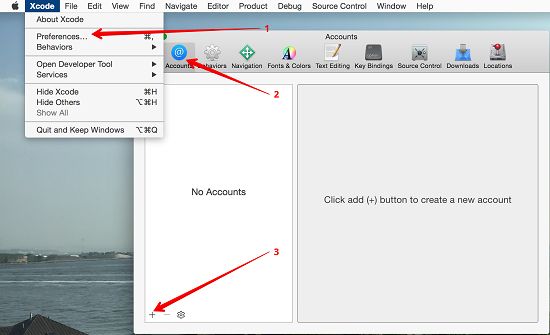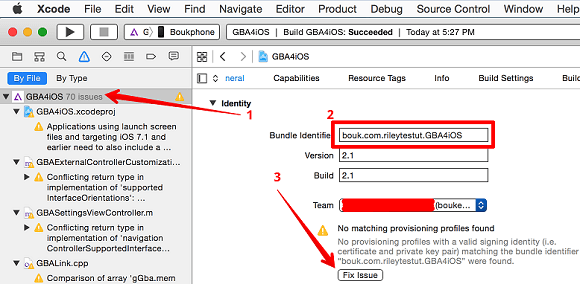As you must be aware, the term “Sideload apps” is used to describe the process of downloading apps from third-party sources, which is not allowed by Apple on any of its devices.
Hence, the only way to download Apps from third-party sources to iPhone without Jailbreaking your device (which voids the warranty) is to first download the third-party app to a computer and then transfer the downloaded App to iPhone.
This process of downloading a third-part app to computer and then transferring the app from computer to an iPhone or iPad is as Sideloading.
Why Sideload Apps to iPhone and iPad?
In general users find the need to Sideload apps to iPhone in order to use open source apps and useful emulators that are not available on the App Store.
In case you are wondering as to what an “Emulator” is, it can be defined as software that can trick an iOS device into imitating or emulating another device.
For example, GBA4iOS is a popular emulator which can trick an iPhone or iPad into behaving like a Game Boy console, allowing you to play Game Boy Advance Games on your iPhone or iPad.
Things Required to Sideload Apps to iPhone, iPad
Listed below are the essential items that you will need, in order to Sideload apps or Emulators to iPhone or iPad.
Xcode 7: Xcode is an integrated development environment (IDE) that provides you with the tools to develop software for iOS devices. You can download the latest version of Xcode from Mac app Store for free.
Mac computer: Xcode only works on Apple’s Mac computer and does not work on computers using other operating systems like Windows Computers or Chromebooks using Google’s Chrome OS.
In short, you will need an Apple computer to run Xcode.
Source Code: You will need the source code for the App or Emulator that you want to Sideload to your iOS device. Generally, the source code for most apps and emulators is easily available online, you need to look for it.
Key Steps to Sideload Apps to iPhone or iPad
The key steps that are required to Sideload apps to an iPhone or iPad, without the need to jailbreak your device can be listed as the following.
1. Setup Xcode on Mac
2. Get Your App’s Source Code into Xcode
3. Connect iPhone or iPad to Mac ready with Apps Source code
4. Create a Code Signing Signature
1. Setup Xcode on your Mac
Follow these steps to setup Xcode on your Mac and add your Apple ID.
1. Download Xcode to your Mac, in case you haven’t already done so.
2. Navigate to the Applications folder on your Mac and launch Xcode from there by clicking on it.
3. Once Xcode is launched, click on the Xcode tab in the top-menu bar and select Preferences in the drop-down menu.
4. Next, select the Accounts tab and then click on the + button to add your Apple ID to Xcode.

Image credit: bouk.co
5. You will now be prompted to enter your login credentials which is your Apple ID and Password.
Note: You may get an error message during this step and this happens if your Apple ID that you are using for this step is linked to an expired membership of Apple Developer program.
If you do get an error message then you need to create a new Apple ID and log in to Xcode using your new ID.
2. Get Your App’s Source Code into Xcode
In order to build and Sideload the app to an iPhone or iPad you need to get the app’s source code into Xcode.
For example, you need to follow the steps below, in case you want to get the source code of popular GBA4iOS emulator into Xcode.
As mentioned above, GBA4iOS is a very popular emulator that can trick your iOS device into becoming a Game Boy console.
1. Download the source code of GBA4iOS Emulator to your MAC.
2. Launch the terminal window on MAC and type in the set of commands required to get GBA4iOS source code into Xcode and hit enter.

The code as shown in the image above (for GBA4iOS) has been suggested by Bouke Van Der Bijl, developer and GitHub contributor.
In your case, you will be using the source code for the app or Emulator that you are trying to Sideload and follow the setup instructions as required for the app or emulator that you are trying to Sideload.
3. Launch Xcode on your MAC
4. In Xcode, Click File > select Open
5. Locate your project file and click on it to open the project in Xcode.
Important: You need to be very careful when using the sudo command. You may be required to enter your OS X system password and any mistake might mess up your system.
3. Connect iOS Device to Mac
The third step is to connect your iPhone, iPad or iPod to Mac using a lightning to USB cable.
1. Plug your iPhone to Mac and click on the Finder Icon.
2. Once iPhone to appears in the Finder, click on the Product tab and select Destination.

Image credit: bouk.co
3. Select the connected device (iPhone or iPad) as your destination.
4. Create a Code Signing Signature
The last step is to generate a unique code signing signature for your app in order to build and install it.
1. Click on the name your App or Emulator in the left-side pane.
2. In the right-pane, type your unique Bundle Identifier name.

Image credit: bouk.co
3. Take a look at the Team entry and make sure that your name is entered in the team field.
4. Now click on the play button which is located in the top left of the Xcode window.

As soon as you click the play button, your app will be built, installed and launched on an iPhone or iPad connected to the Mac via the USB port.
The third-party app should now be available on your iOS device. In case you get an error message, it is most likely that you have used an incorrect source code.